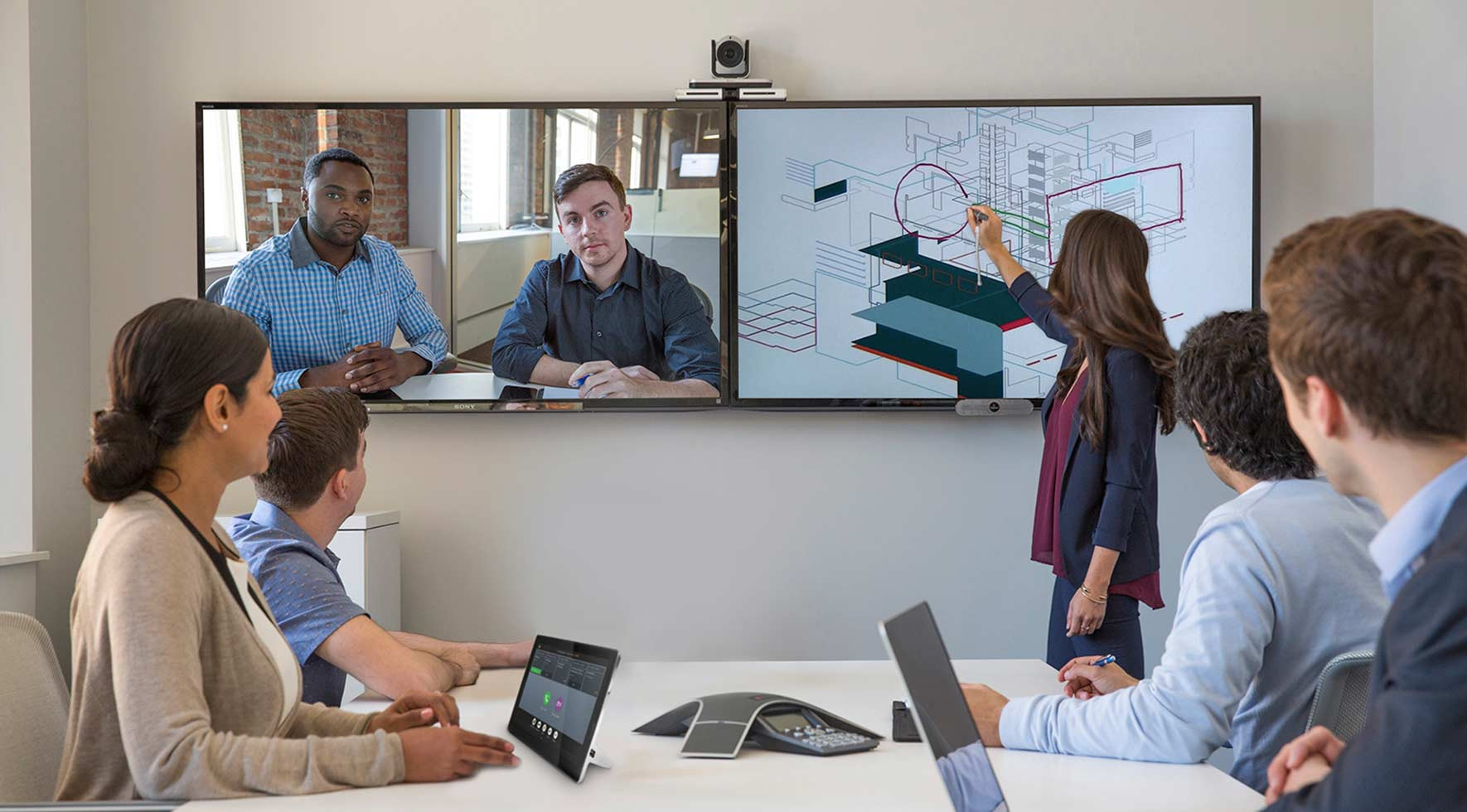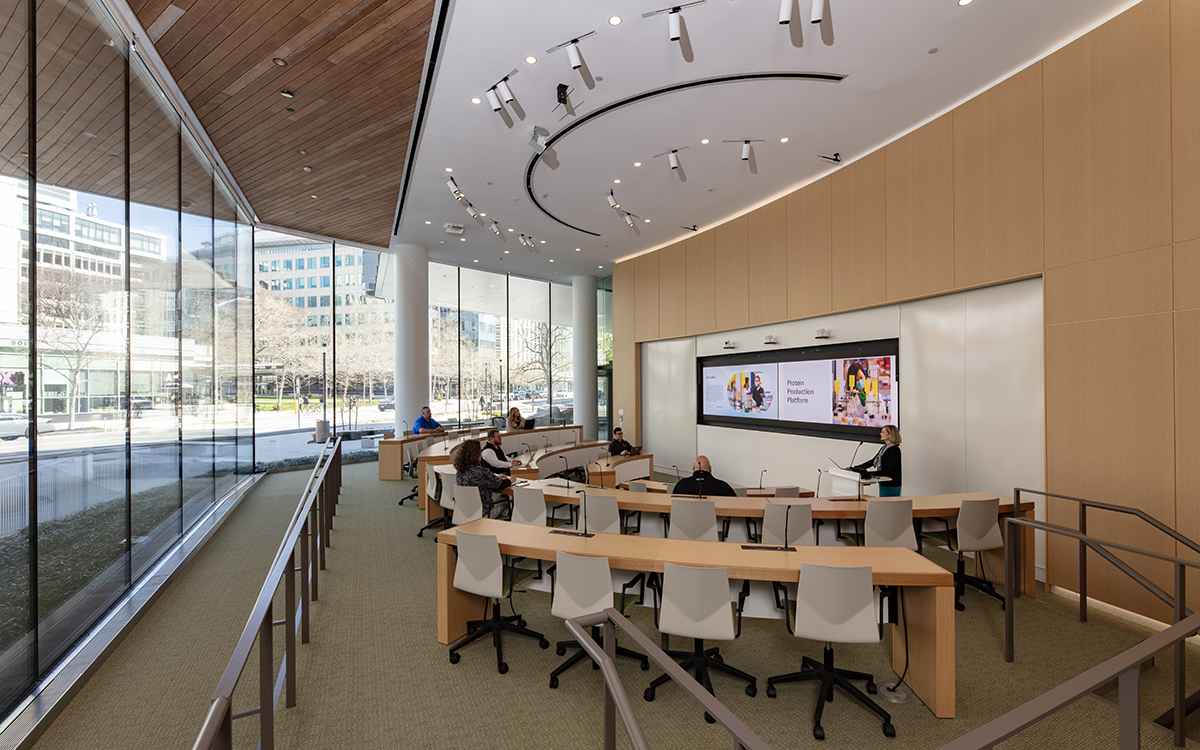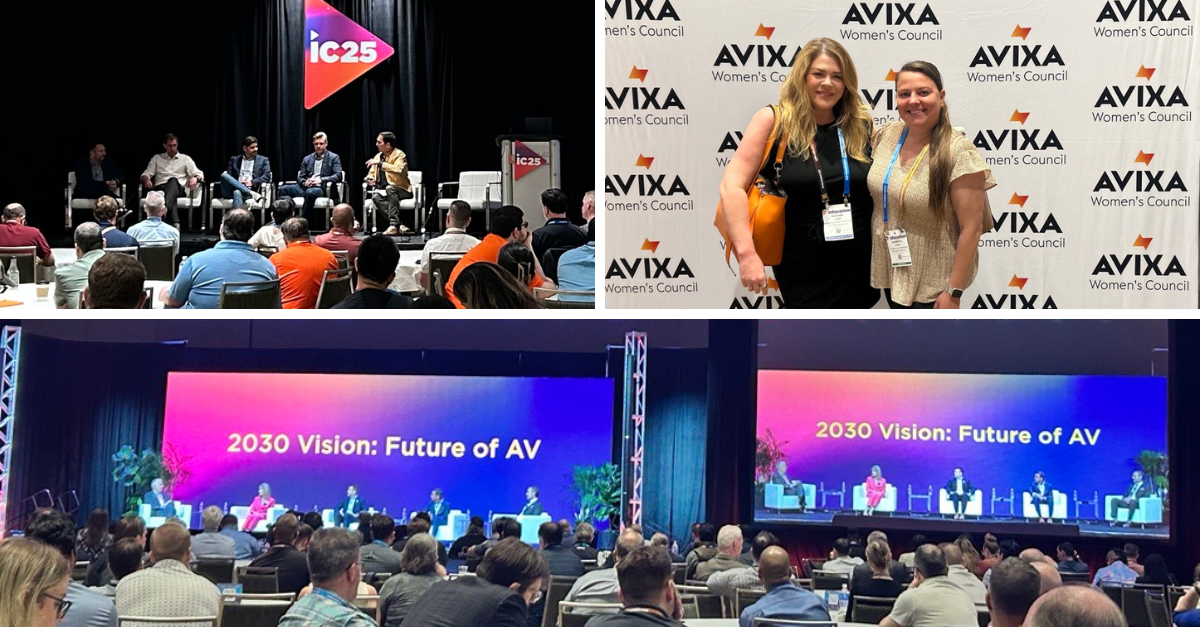As machines have replaced much of the repetitive work we used to do, today’s work is increasingly creative and collaborative. Now more than ever, we are working in groups, both face-to-face and virtually with remote colleagues, and incorporating meeting room technology. Just as the kind of work we do varies, not all collaboration is the same. There are three main types of collaboration, and each requires specific furniture applications and meeting room technology. Read on to learn about how to create the perfect user experience for each collaboration type.
EVALUATIVE COLLABORATION
Evaluative collaboration is when groups of people are evaluating information. Typically these are smaller groups of people that can be situated in close proximity to the displays to view data or imagery in detail.
Space Requirements:
- Furniture – A meeting room table at standard desk height provides ideal ergonomics for using a laptop. The table size would typically be smaller, for up to 6 people, and a round or D-shaped table to keep participants close to each other and the information being displayed.
- Technology – Flat screen displays perfect for this type of collaboration, and for smaller spaces in general. Displays should be located at the end of the table or wall-mounted. Dual displays enable participants to compare content side-by-side.
- Connectivity – For democratic engagement, all participants should have the ability to connect and share content from their personal device using a centrally-located cable management solution integrated within the table.
INFORMATIVE COLLABORATION

Informative collaboration is a more traditional presentation in which one person presents information while the audience listens, learns and engages in a discussion.
Space Requirements:
- Furniture – Meeting rooms are typically medium to large in size to accommodate various size groups. The presenter is seated at the end of the table closest to the display or projection, referencing the content on their laptop. The presenter faces the audience and makes eye contact while presenting to perceive non-verbal cues that indicate how the content is being received.
- Technology – A large flat screen display works for medium-sized to large groups of up to 20 people. The display is large enough for the person seated furthest away to read the content.
- Connectivity – Connectivity to the display system and power should be located at the presenter end of the table. For larger spaces, a secondary cable management solution should be located at the opposite table end.
GENERATIVE COLLABORATION

Generative collaboration is about brainstorming, creativity and co-development of ideas. To promote the free flowing of ideas and participant engagement, the space design should support movement and interactivity. Proper distance between the table and collaboration tools is important.
Space Requirements:
- Furniture – Smaller stool-height worksurfaces promote standing, perching and moving around to access collaboration tools.
- Technology – Writing and drawing are an important way for people to visualize ideas and concepts. Generative spaces should be outfitted with both analog and digital tools. Analog tools include more traditional whiteboards, writeable wall surfaces or electronic whiteboards, while digital tools are all forms of digital display or projection.
- Connectivity – Wireless connectivity lends itself to this type of environment, as furniture can then be mobile and flexible to support different sized groups.
By identifying the type of collaboration you wish to promote in a given space, you can follow these AV design recommendations for furniture applications, meeting room technology and connectivity.






